Quanzhou’s downtown has to be competing for the densest and most diverse collection of religious gathering places in the world, certainly in China. Within a single square kilometer, easily walked but made even more convenient with these adorable buses, one can find Buddhist monasteries, Confucionist schools, mosques, catholic churches, and temples to local deities like Mazu. But for me, the Daoist temples are always the choicest.
A controversial tone to start us off and set the stage. I am not a believer of the divinity of Buddha or Laozi, and my knowledge of these beliefs and their organizations is pitifully small.
I don’t want to hurt feelings.
The comfort level I have to make jokes is a testament to their supportive nature. Perhaps I’ve gone unnoticed, just another common man caught up in my routine bodily desires, but I get a sense of openness that is not there in all groups with passionate beliefs.
To the casual observer, Buddhist and Daoist temples have a lot in common. In fact, there is a lot that is the same. The two systems have grown, mingled, and borrowed from each other over the centuries. But each has a distinct DNA that underlies every structure and action.
Language fails me at every turn, but I keep trying. Daoist temples have a carefree, noncommittal atmosphere. Qingyang Palace has it. An unmanaged flirtation with a messy modus operandi. Qingyuan Mountain has it. A self-effacing playfulness. As if to say, you know, we have to do this. It’s nice you’ve come, but you could get this at home. Come on in, look around, thanks for stopping by. Did you know our guy Laozi is the best? He’s number one, and you’re Number One too, with a wink and a sly smile.
Yuanmiao Daoist Temple has all the character that I came for, wrapped in a shiny candy-colored coating, courtesy of Quanzhou’s unique approach to design. You’ll see. But look at the entrance! Barely an alley in front. Motorbikes lean comfortably against the foundation.
Covered with carvings and painted symbols, the temple says so much to those who are ready to hear. Here I am as a first grader attending a university level lecture. I want to share in the history, absorb the memories, but I am not capable.
We spent so much time enjoying the entrance. The twisting dragon pillars! Colors and carvings covering every surface. The staggering construction, now that we know a bit more about it.
Imagine having this view just outside your window? I don’t want to look through bars to see it, but a bit jealous if I’m honest.
No tickets or fees necessary to go anywhere in the temple. No security presence to even count visitors. No souvenir shop for fridge magnets.☹️ Places for donations must exist, but were so unobtrusive that I didn’t notice.
Tuesday afternoon, an unblemished blue sky looks down on us. We couldn’t ask for a nicer, or for a more untroubled afternoon. Might have been three other visitors in the whole place. Heck, even Qingyuan Mountain had dozens of people walking about and that’s a forty minute drive out of town!
A Buddhist temple this deserted would feel strange, uncomfortable even. The hustle and bustle of visitors adds something to the atmosphere. Think of the sales assistants in the shops without customers.
As if independent of outer influences and self-reliant, I think a Daoist temple would feel the same crowded or deserted. It would make no difference. Something to strive for in our lives, to remain the same, the center of a lonely crowd.
We do go inside and notice the lanterns in the process of being hung. Or perhaps being taken down? Without motion it is not clear which direction the lanterns are going, up or down. China’s National Holiday ended October 7. A month has passed (today is November 5) but to us Laozi disciples, what is a few weeks between existence and nothingness? The lanterns look nice.
Now that I have some appreciation for Penjing, I will always pause for a closer look. The trees look well fed, all exposed root and branch for the world to see, swimming in their shallow pools. Even the weeds get a chance to express their individuality.
Approaching the Main Hall, every surface tells a story. Every character means something, and I can only wish I knew more. Below the main passage, I do recognize one tale.
Laozi himself, departing for the west on his trusty ox, closing in on the gateway of the Hangu Pass. Here he paused for an evening with the captain of the guard, who entreated him to leave something behind to help others understand. This is where Laozi, as legend has it, wrote the 5000 or so characters that make us the chapters of the Daodejing.
Maybe the captain saw that Laozi needed to write. To say something that left inside would just eat away what remained and spoil a well-earned retirement. We who write can recall that Laozi may have been many things; a father, a member of the court, an advisor sought by the scholars and sages of his day, but he was also a writer. Maybe he was a writer first; after all, his writing is all that remains for us.
We should give more thanks to the guardian of that outpost. Maybe he should have a statue, or a plaque. I will look for it. All the temples, the art, none of this would exist for us to talk or write about. But most of all, these few words that open the door to contemplation.
The ox has a playful aura about him, as like a puppy. He fairly frolics over the clouds. Laozi likewise is looking back, giving his blessing, maybe waving farewell, or perhaps he’s laughing at the silliness of those who wish things to remain the way they were.
I always thought Laozi went into the West “alone” and was never heard from again… if so, who is this little guy with the gourd and Gandalf staff leading the ox? Anyway, we can’t begrudge Laozi his servant. He’d earned some first class travel.
As we enter the main hall, a crowd of characters, a multitude of meanings and arcane history covers every accessible surface. The eyes glaze over, engulfed by this flood of symbolism. Divinity is furthest from my mind when confronted by this riot of expression; I see my, our, desperate compulsion to express something. Something that brings us together, connecting all this food, color, and noise to meaningful ends. These routine bodily desires, and their thousand and one affairs that tangle and confuse us, until we die.
Passing around the main hall, I’m reflecting on my contribution to this grand project. Google Yuanmiao Temple, Quanzhou, and you will find a pitiful five relevant links. If you consider the #1 link relevant, Trip Advisor, and I do not, there is almost no information out there. Unbelievable as it seems, this little article and pictures contains all the *English* information I could pull together plus more from the visit.
You guessed it! Every character of the Daodejing carved in gold characters across the back wall of the Main Hall. A person could read this in half an hour, then spend a lifetime trying to understand the nuance of it. This is the second time we’ve seen this text carved in stone today. I should have brought paper and charcoal to get souvenirs.
Read from right to left, top to bottom, the name of the person(s) who did the carving; the place, Yuanmiao Temple; the creation date in the Daoist calendar, year 4705; and the world standard date, 2008.
See the glass cases lining the wall? Each showcased a collection of artifacts important in Daoist rituals. I selected three here with interesting purposes.
On the left is a dragon horn, also known as a spiritual horn, or trumpet. These were used as signal horns during ancient wars, and today have a use as a ritual tool. They are said to be able to attract gods and exorcise demons.
On the right is a dust whisk or dust tail. Daoists are often depicted carrying a whisk with them while traveling. The mystic purpose, or meaning, is to brush away worldly ties and transcend the mundane world. Daily grind getting you down? Brush it away as you would a fly.
Top, a peach wood sword used by Taoists to cast spells and slay demons and monsters. I assume this means wood from a peach tree but can’t be sure. When chanting incantations, burning talismans, that kind of thing, coordinating with a magic sword greatly helps.
I got into this subject to better understand myself, but also to gain an understanding of that ubiquitous and basic trigger that every human is driven by, but also shapes and contributes to, culture. There is a world of fascinating knowledge and explanations here. Yuanmiao Temple persuaded me to commit to exploring it.

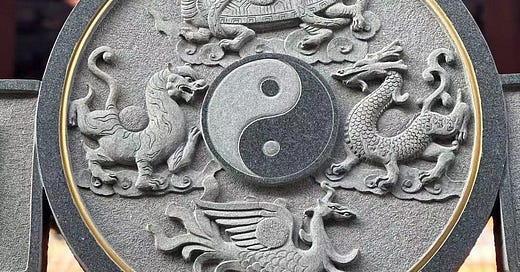



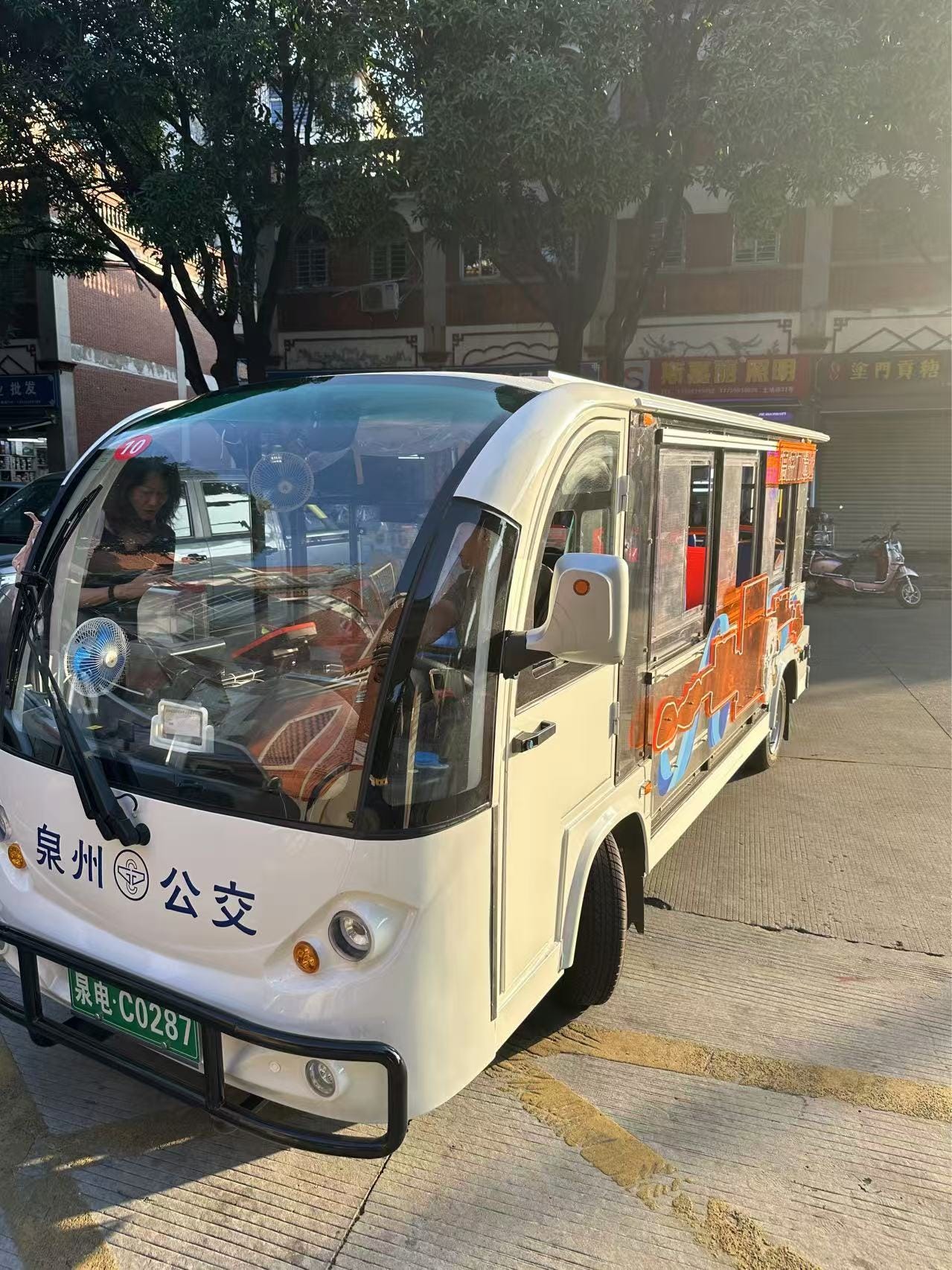
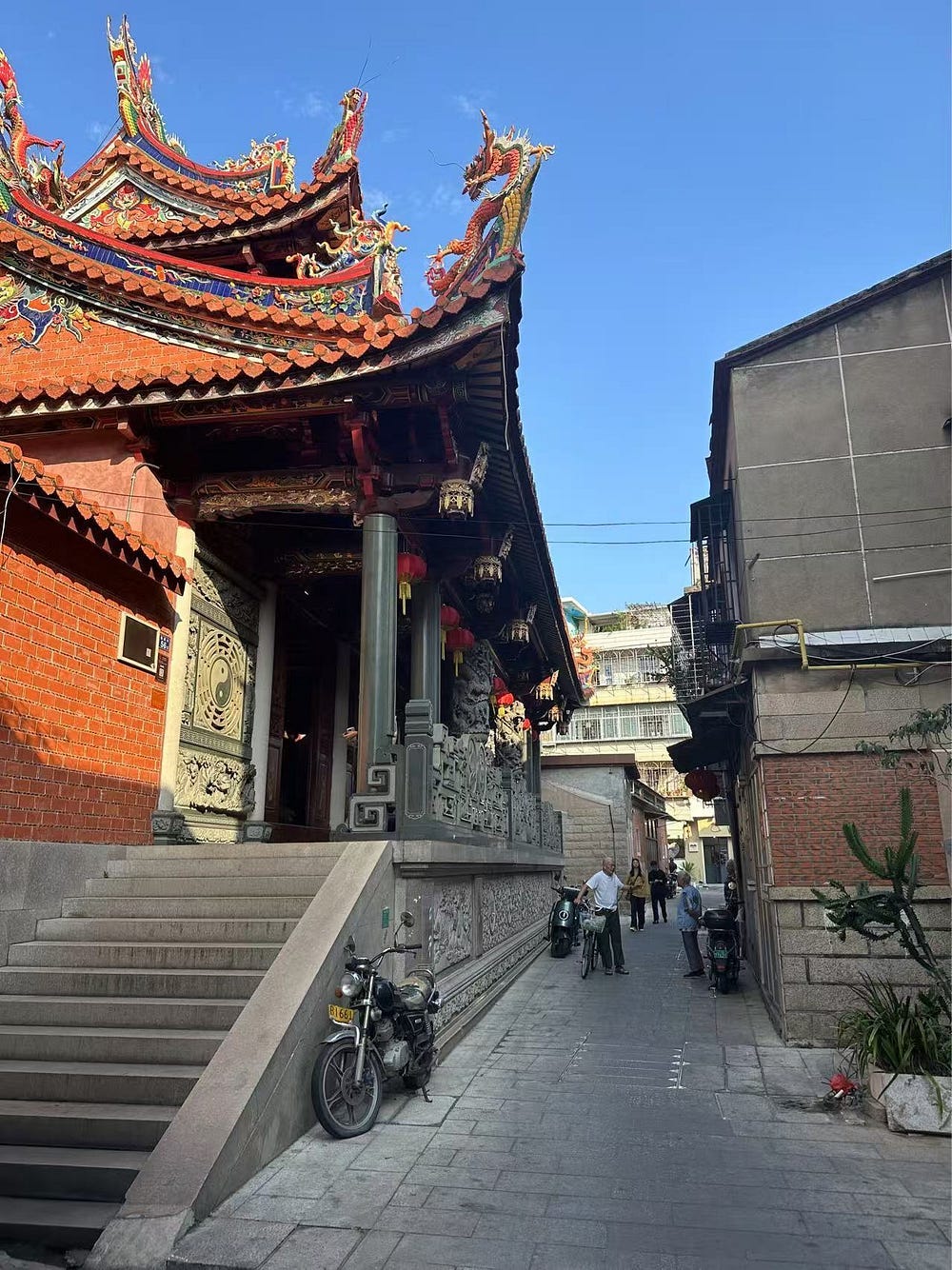

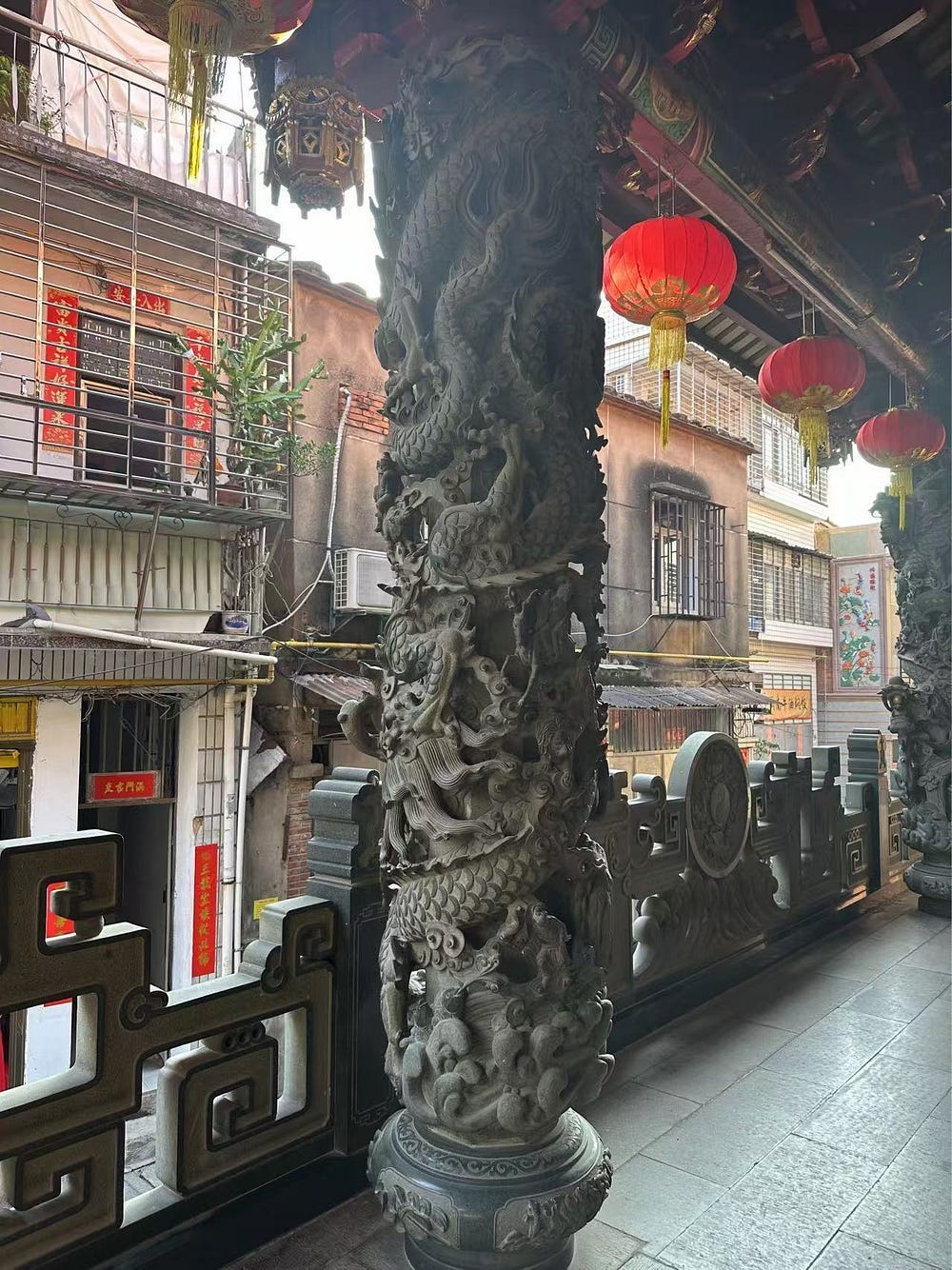
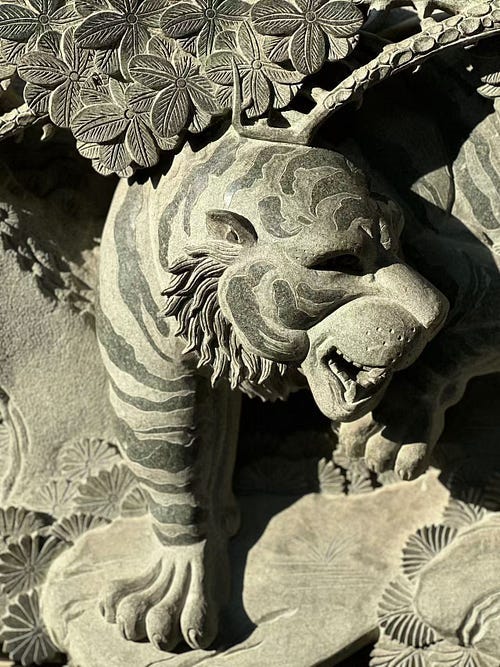

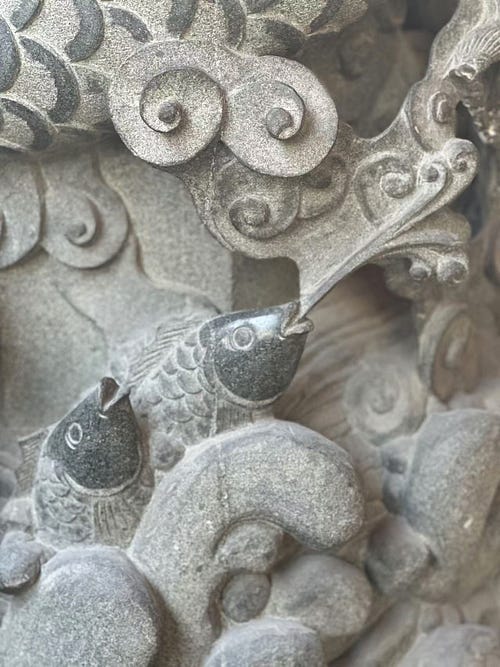




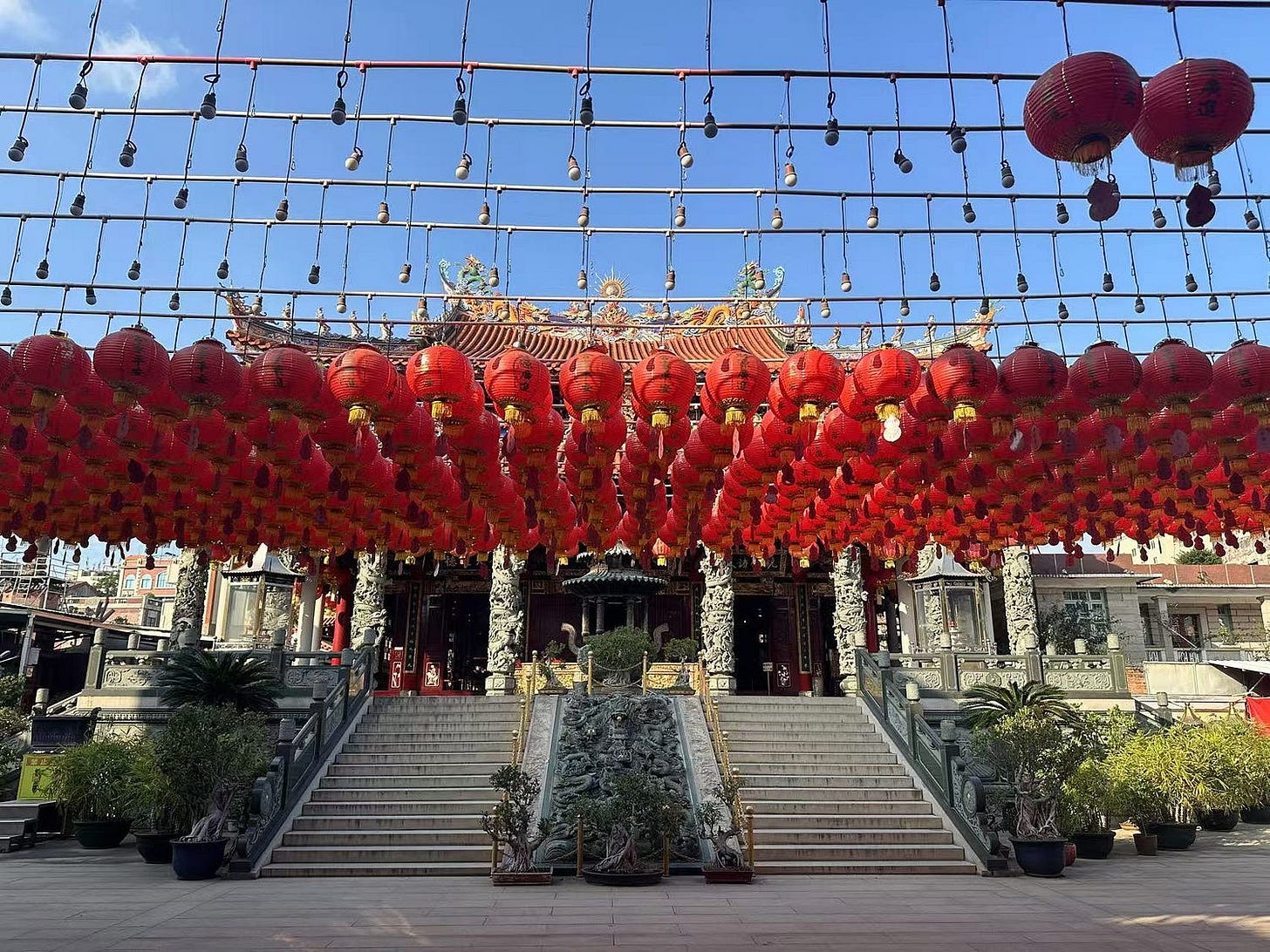
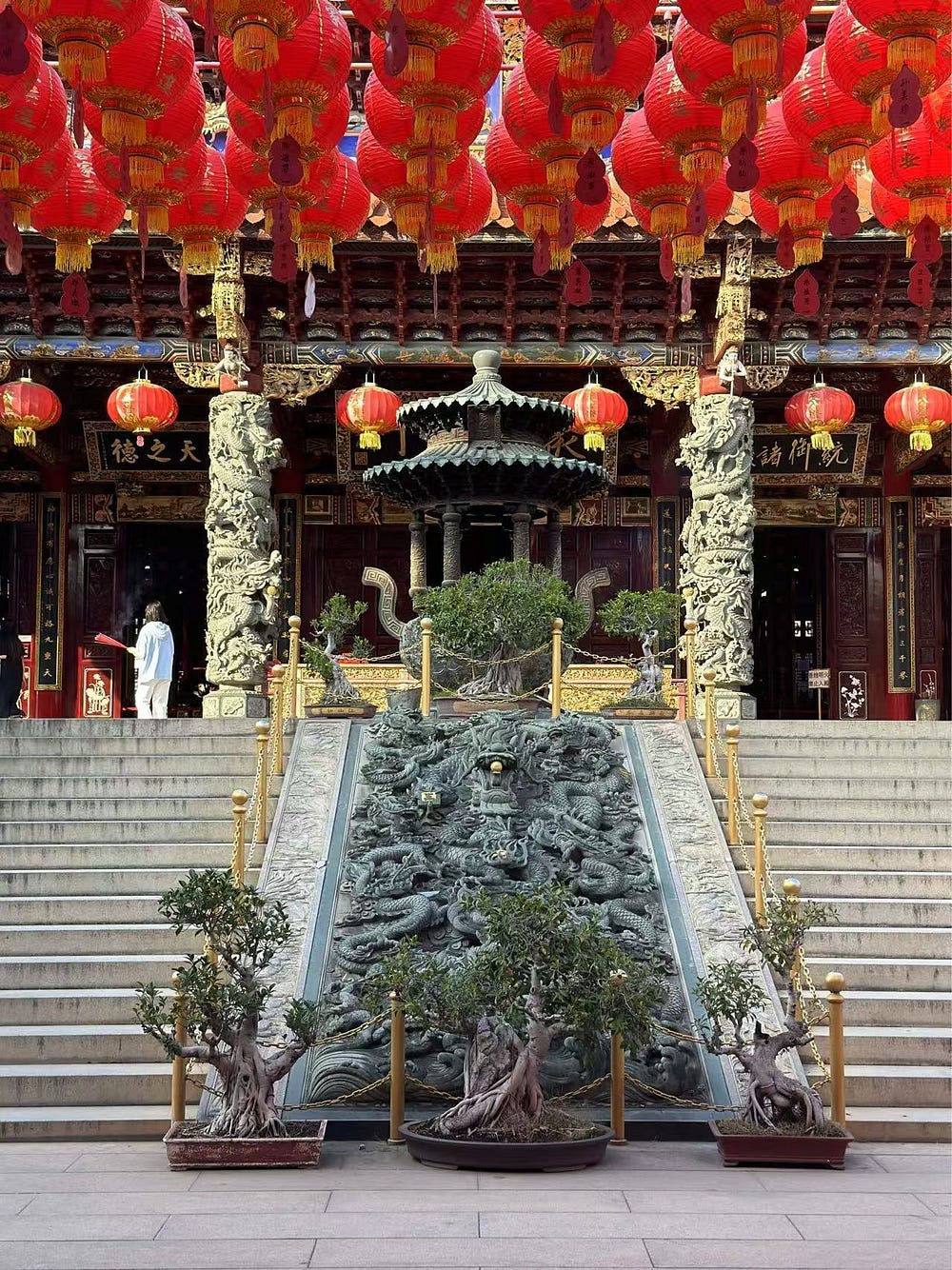
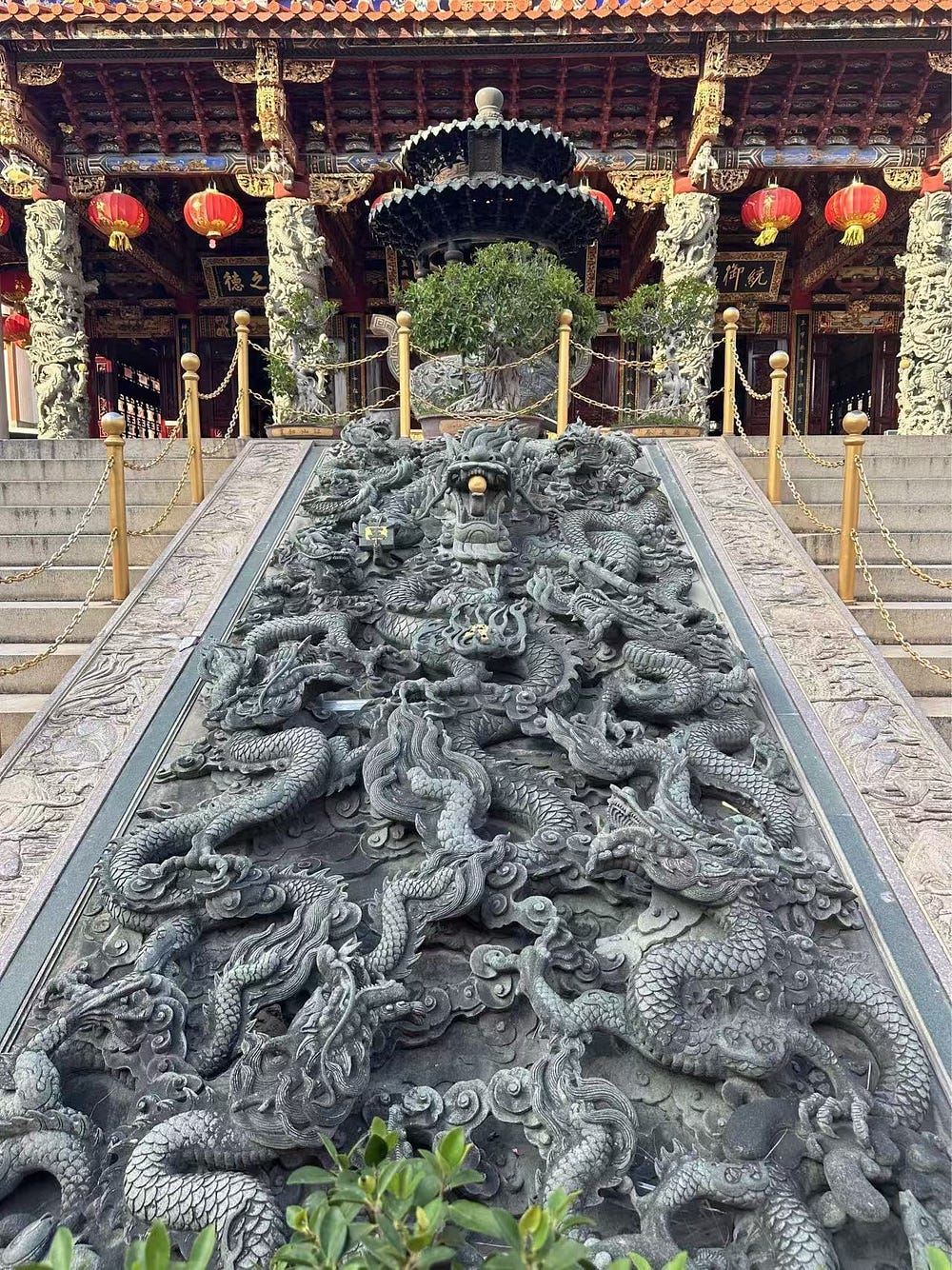


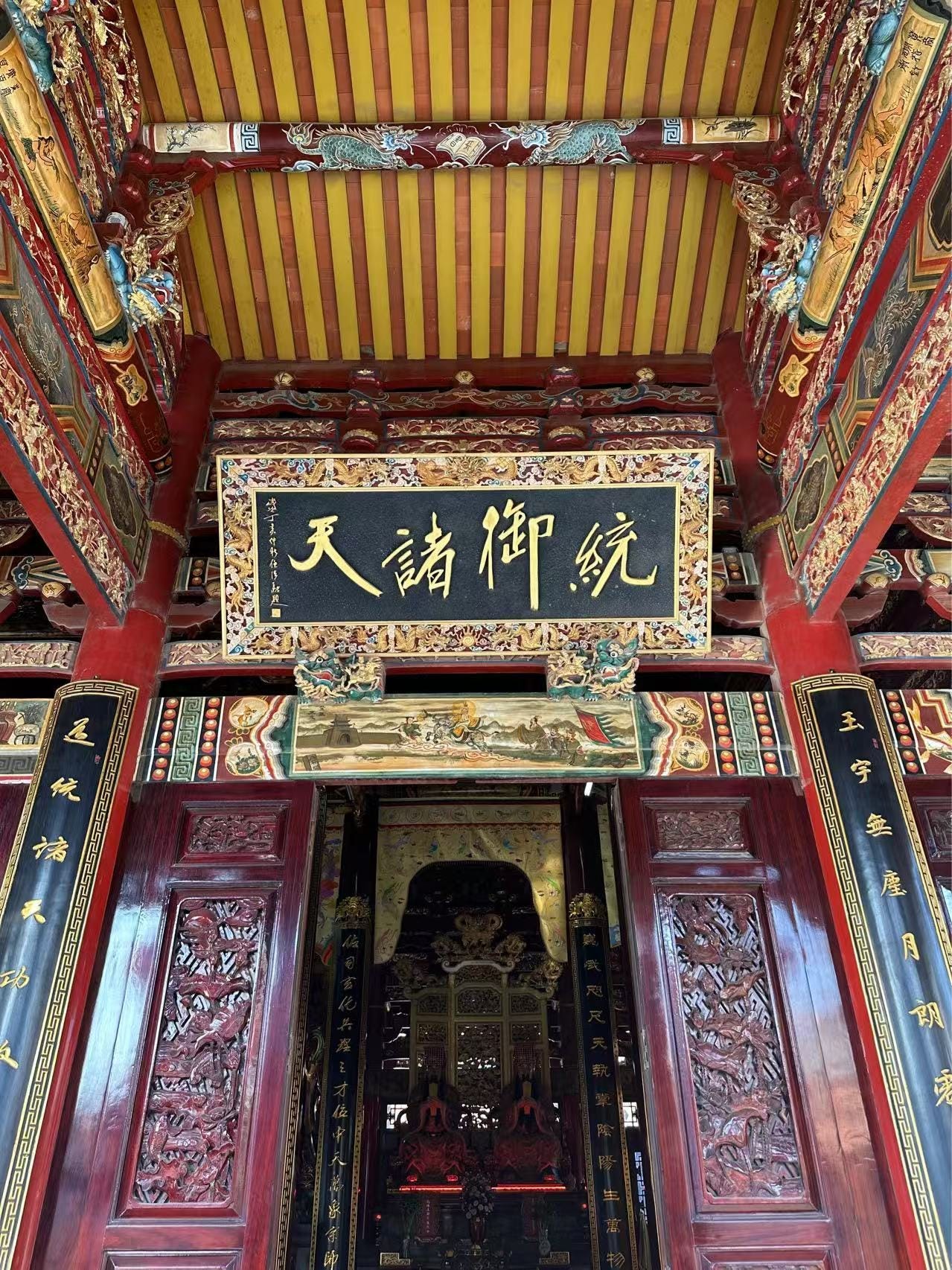
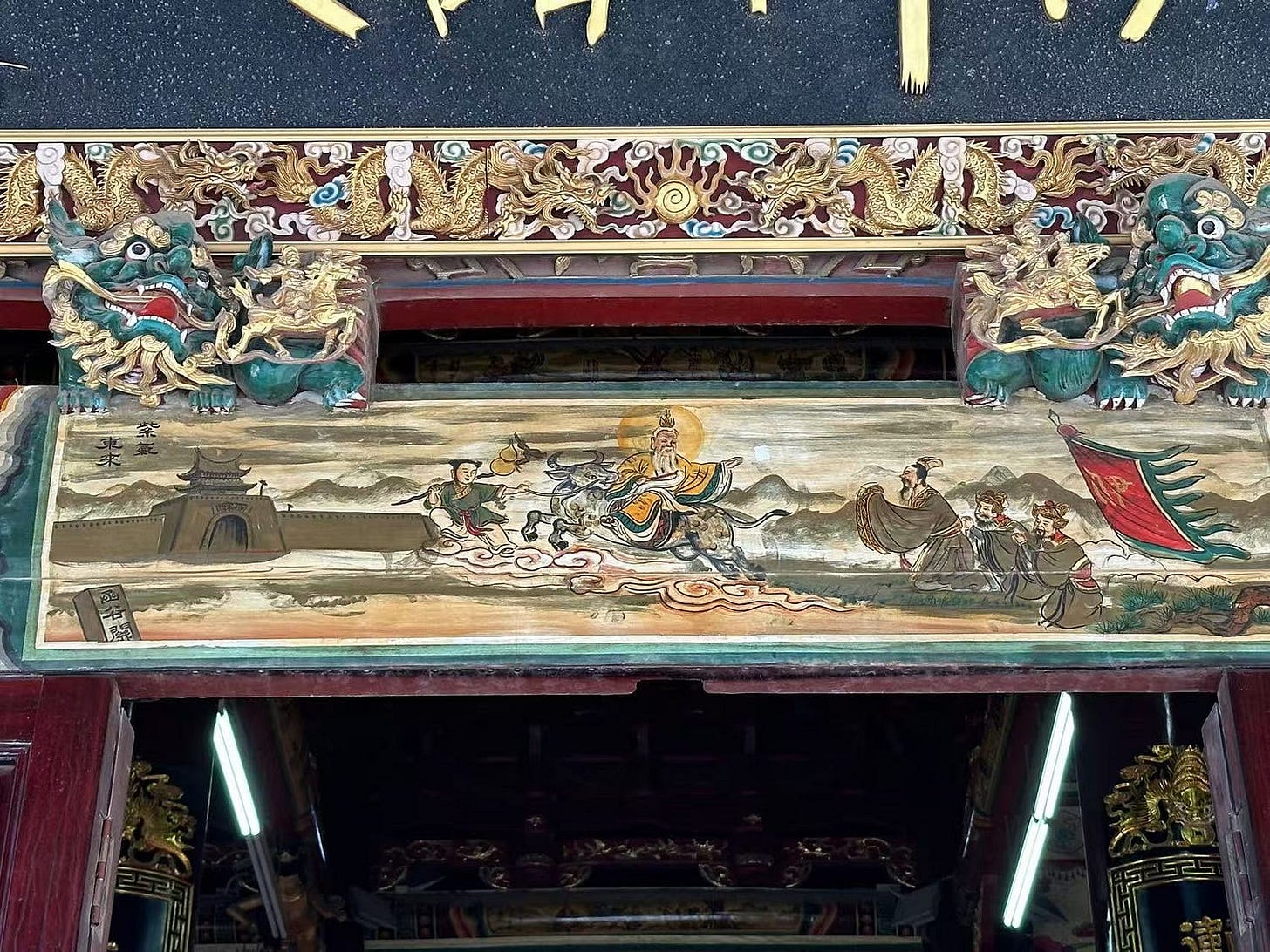
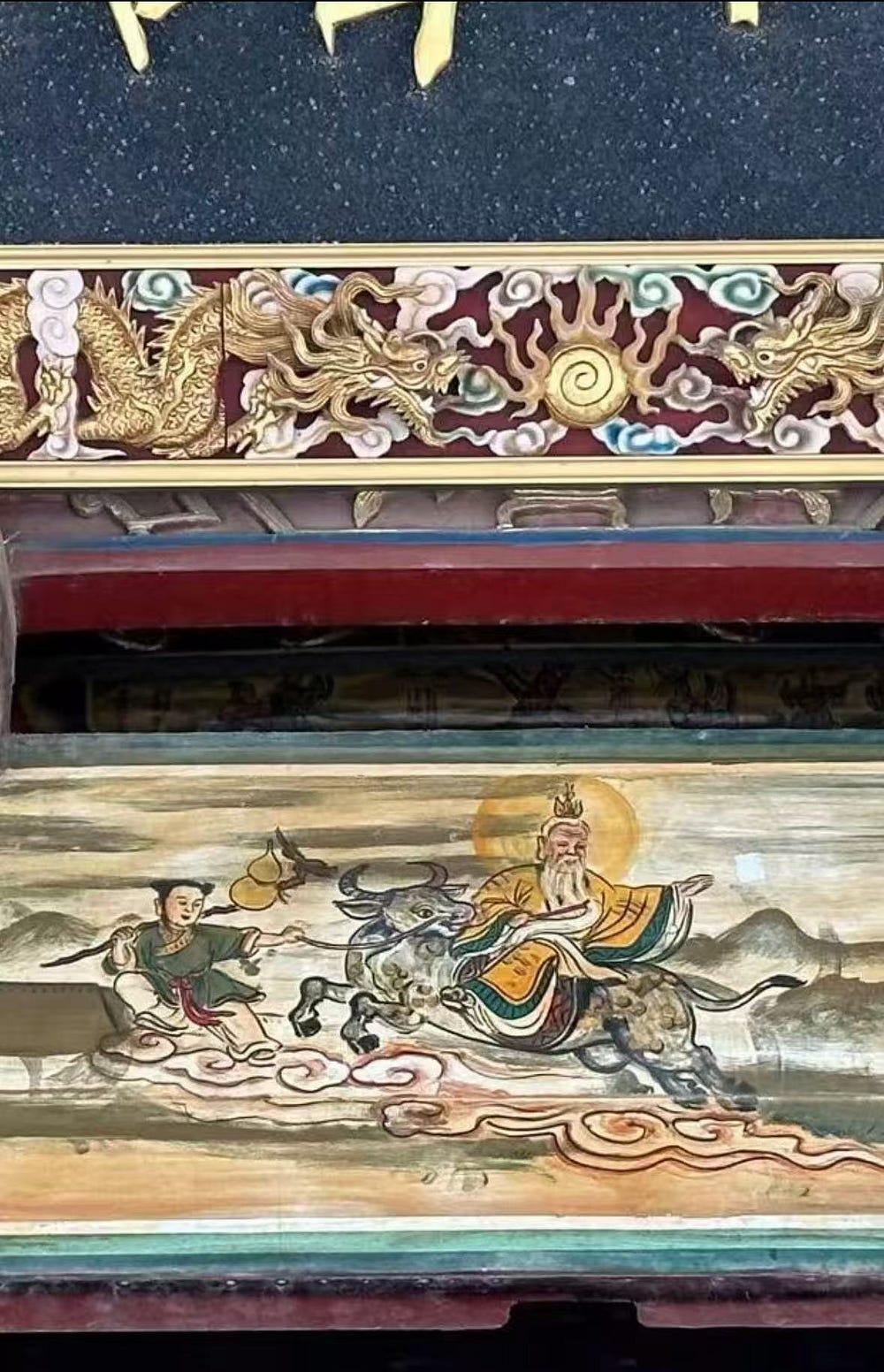
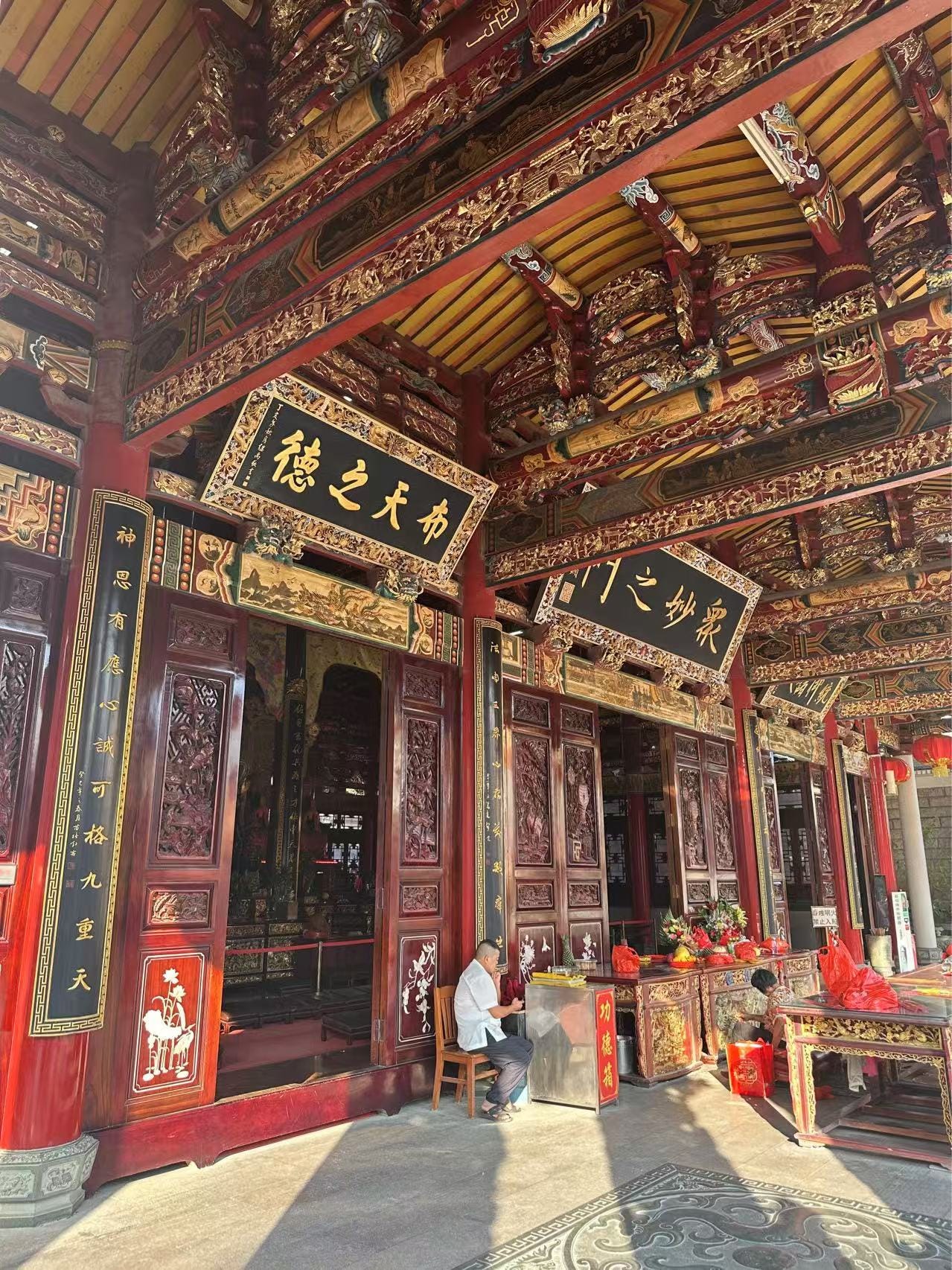

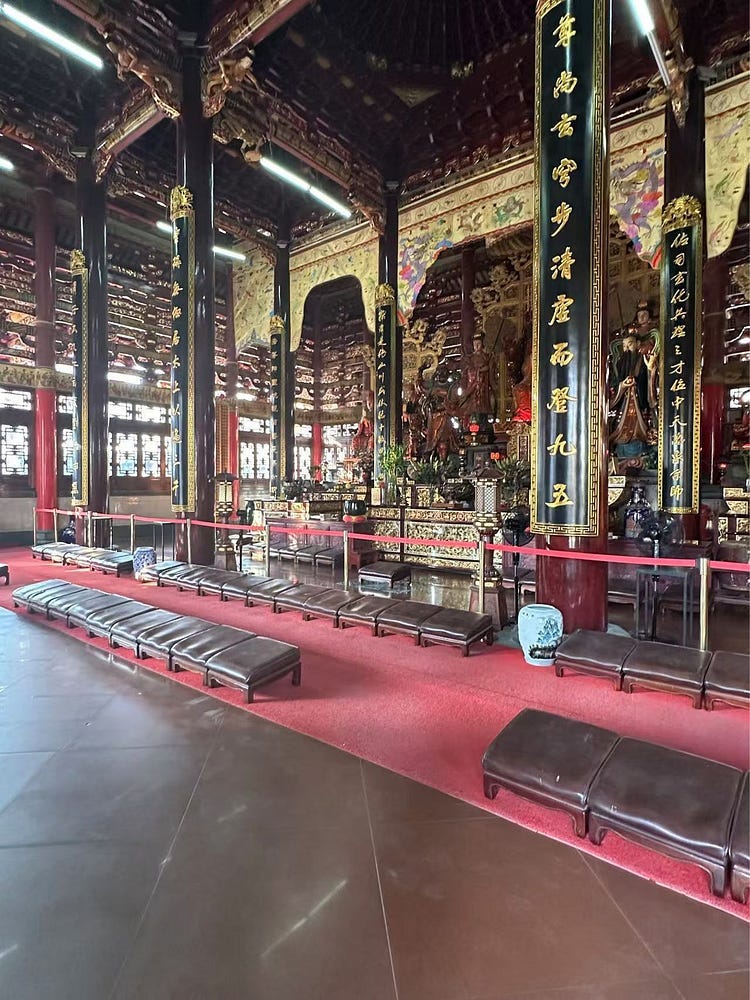
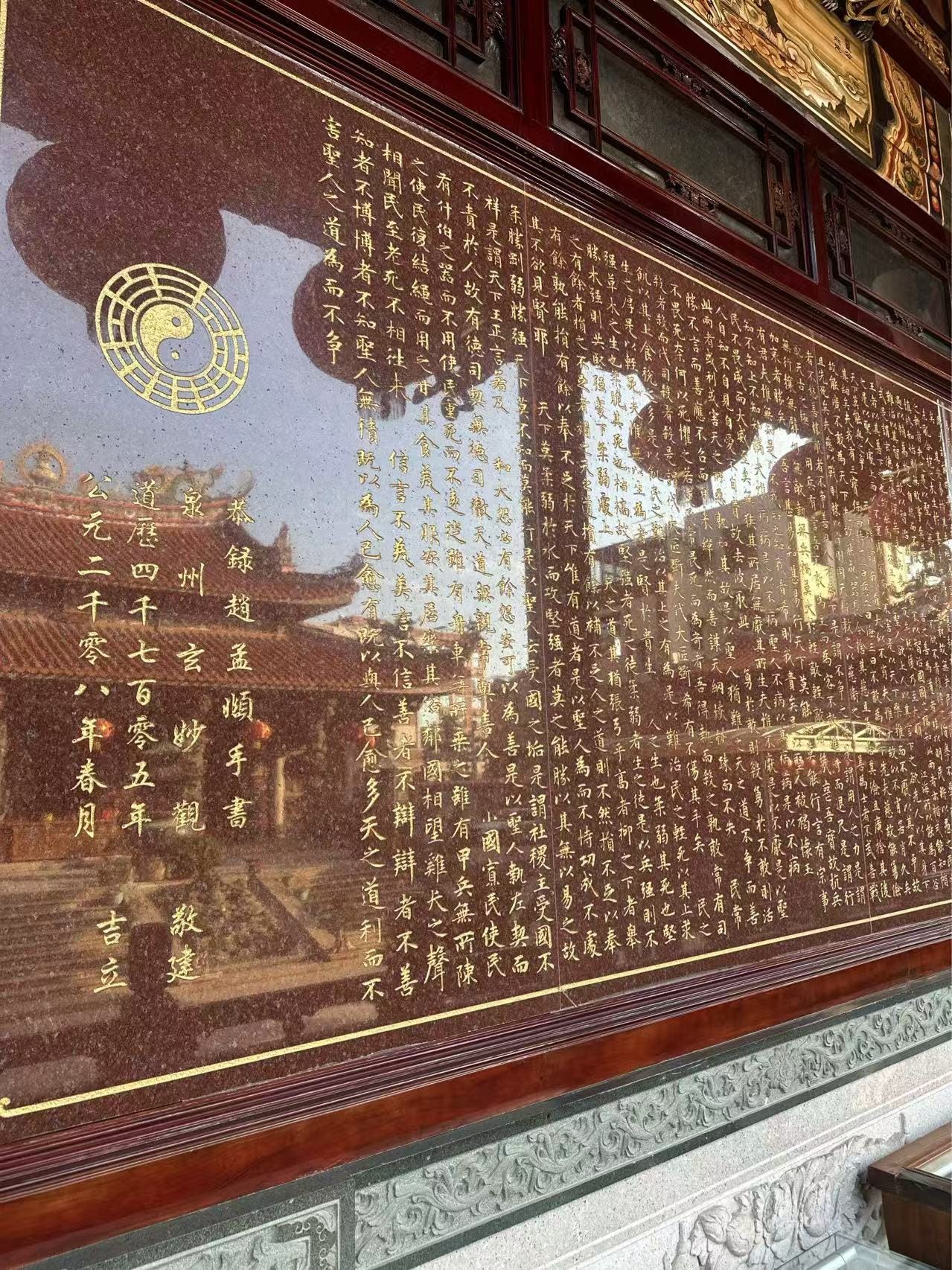

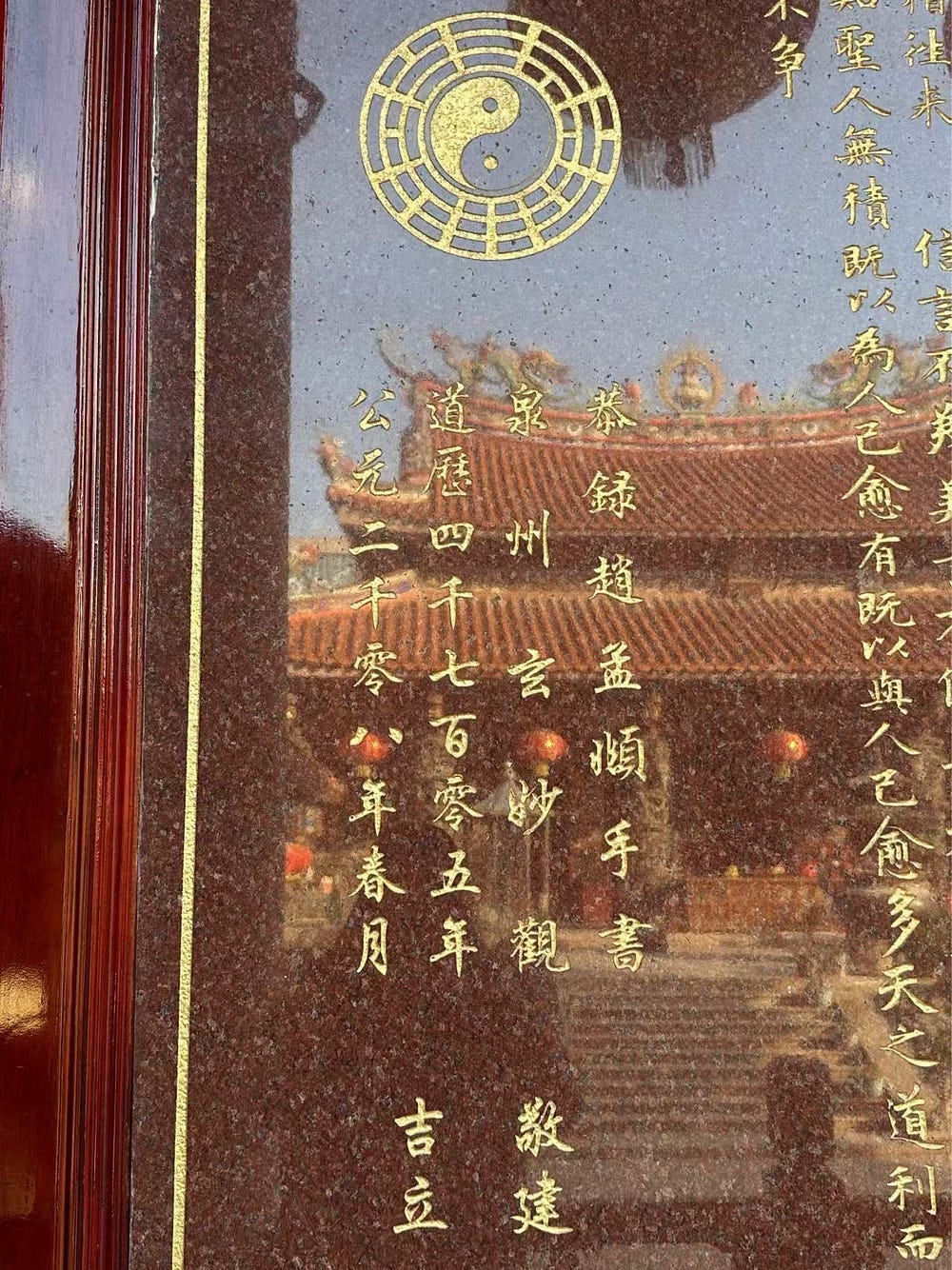



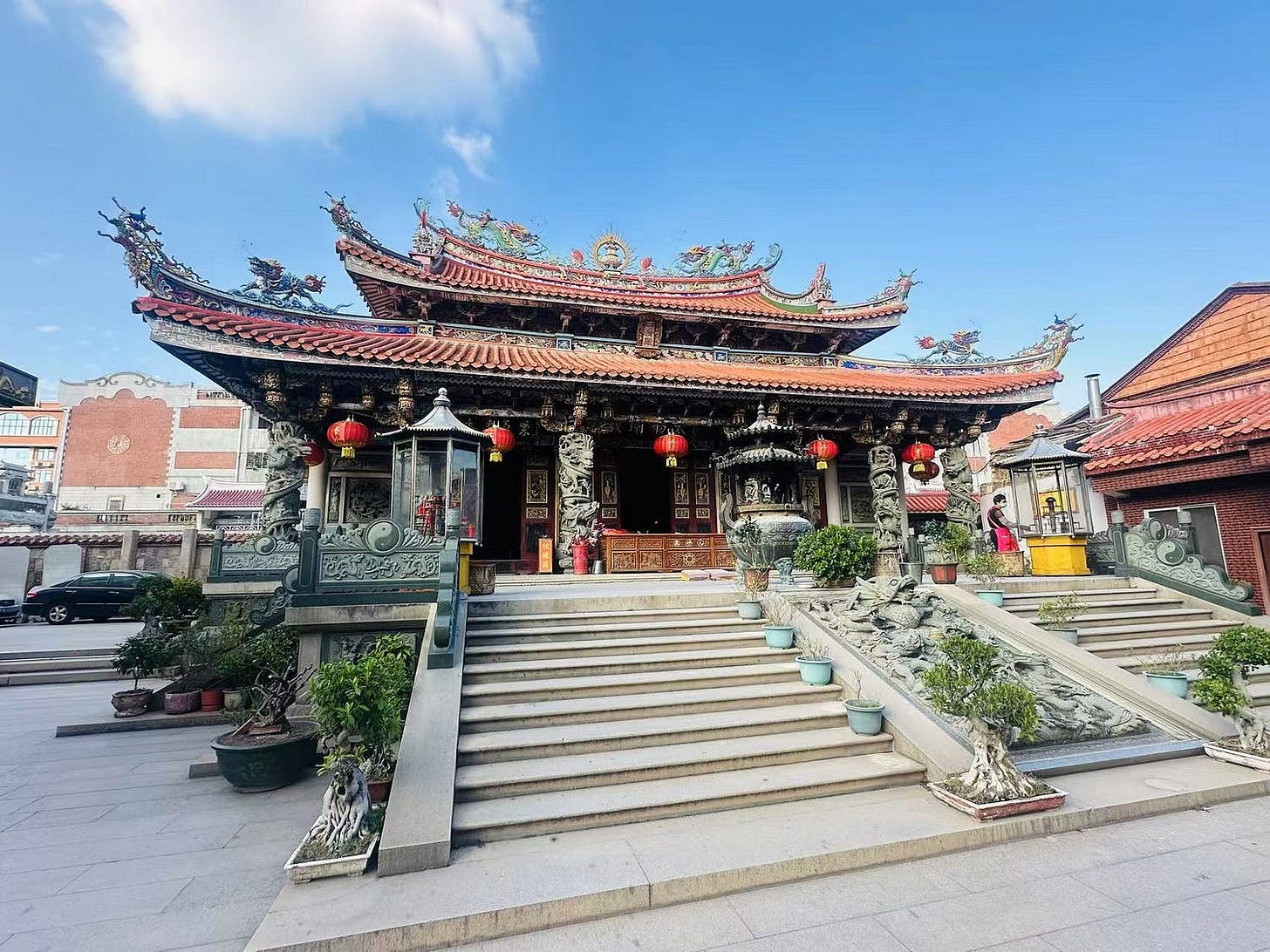
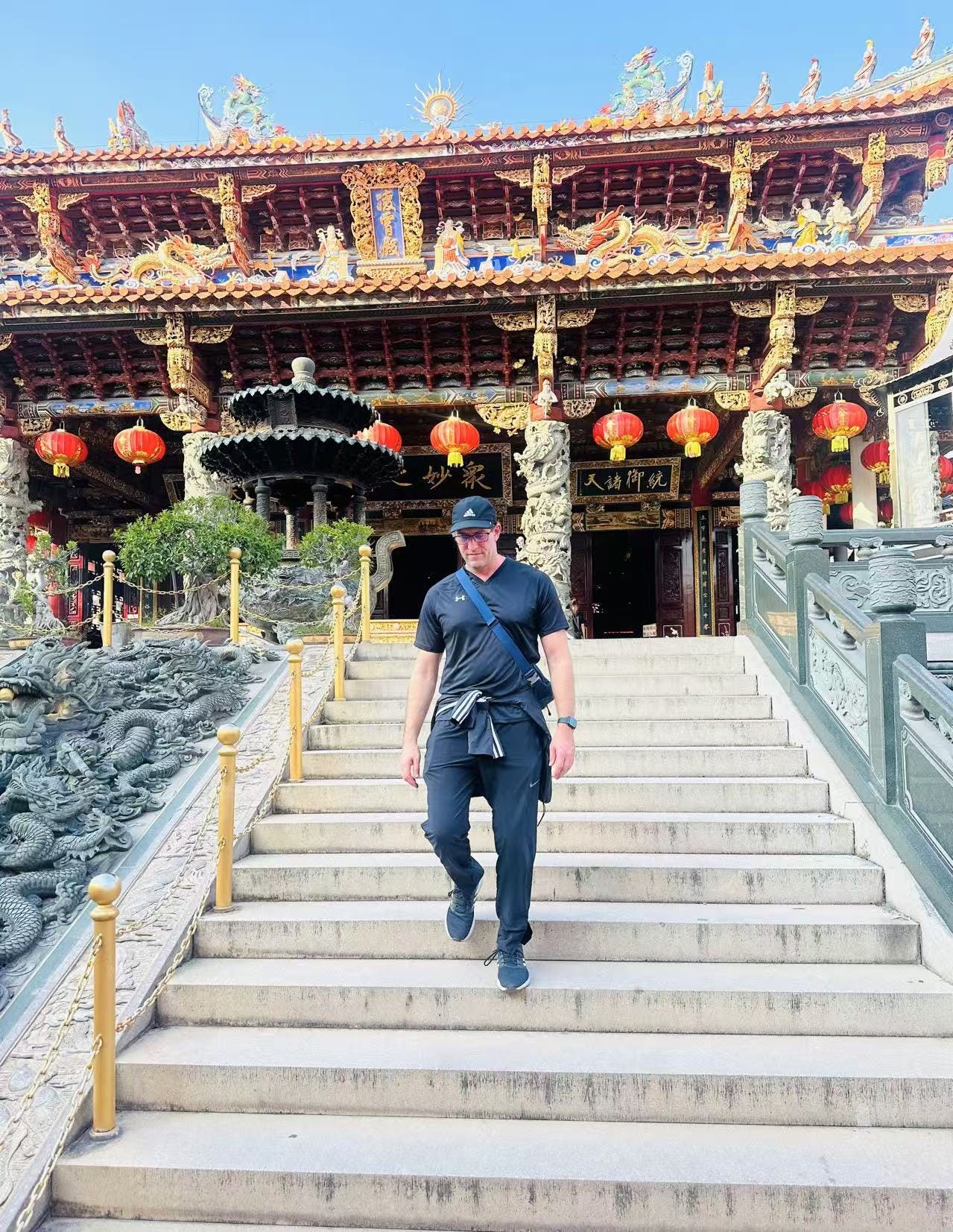
A wonderful sharing, Paul. What a magnificent temple with such detail in the carvings. I love the whisks to be used to brush away the day's troubles. I appreciate how you bring the cultural wonders of China, which has such a rich history, when there is such conflict between China and the U.S.
Thanks for this beautiful tour of the Daoist Temple. So different from the Shinto and Buddhist temples I've seen in Japan.